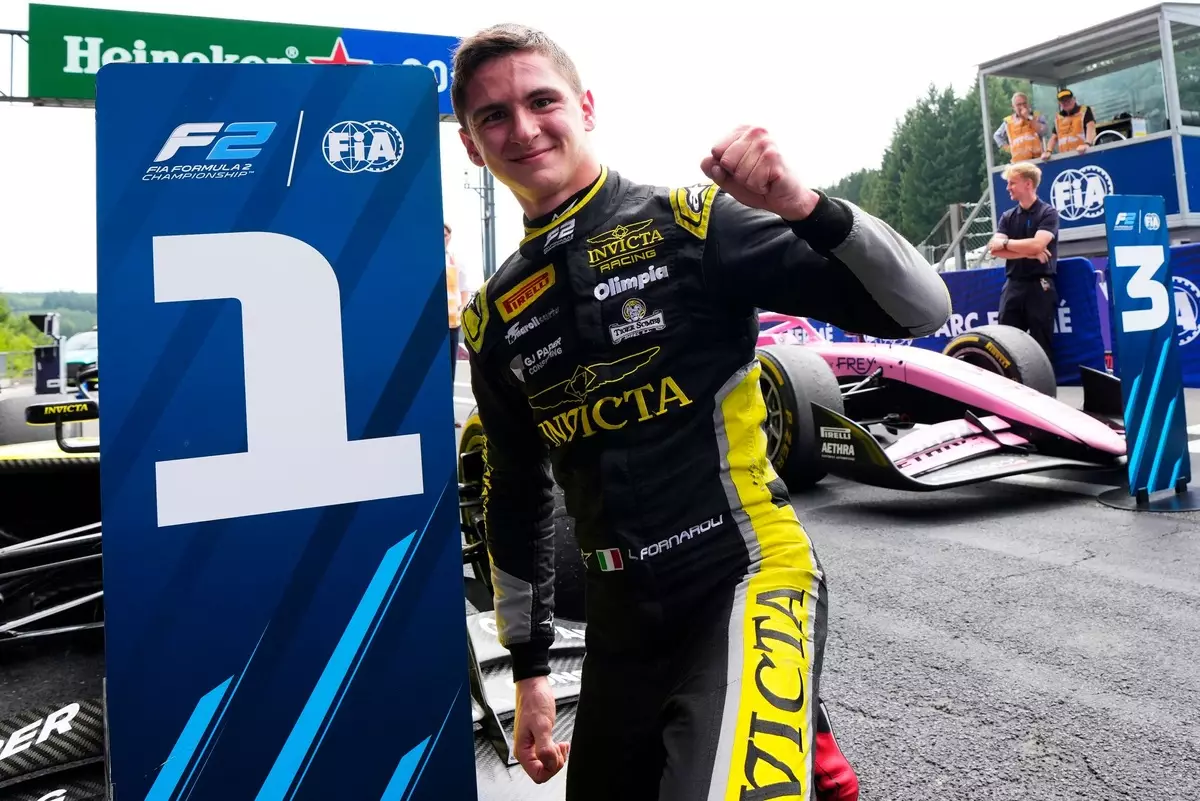In the fast-evolving world of Formula 1 and its feeder series, the traditional pathways for driver progression are often rigidly defined by affiliations with major team academies. Drivers like Oscar Piastri, Lando Norris, and George Russell have achieved success through well-trodden routes—F3, F2, and official F1 development programs—forming a predictable narrative of talent development. Yet, amidst this landscape, Leonardo Fornaroli’s ascent challenges the established norms and signals a potential paradigm shift in how talent is recognized and cultivated in motorsport.
Fornaroli, a young Italian driver leading the current F2 championship, stands out not only because of his early success but also because of his absence from an F1 team’s radar. Unlike many of his peers who are embedded in the systems of Mercedes, Red Bull, or Ferrari, Fornaroli has yet to secure a formal F1 sponsorship or developmental role. This anomaly has sparked conversations within paddock circles, suggesting that the traditional metrics—name recognition, social media presence, and prominent academy ties—may not be sufficient or even necessary for identifying future F1 stars.
The story of Fornaroli underscores the importance of assessing drivers beyond superficial credentials. His journey from Italian F4, where he demonstrated resilience by winning races without consistently dominating, to F3, culminating in a championship victory with Trident, exemplifies a steady, calculated progression rooted in consistency and raw talent. What sets him apart is his ability to execute race strategies flawlessly and maintain composure under pressure—a trait that is often undervalued amidst the spectacle of overtakes and headline-grabbing moves.
Challenging the “Click-and-Claim” Model of Talent Selection
For decades, F1 teams have leaned heavily on their academies to unearth the next big star. This system, while effective in some cases, has often bred a kind of tunnel vision—favoring drivers who excel in the conventional metrics of success and marketability. But the case of Fornaroli hints at a neglected truth: the most valuable drivers might not be those who shout the loudest or possess the flashiest social media following.
James Robinson, principal of Invicta Racing, boldly champions Fornaroli as a “Moneyball” pick—borrowing from the baseball analogy of using statistical analysis to assemble winning teams from undervalued assets. Robinson’s assessment resonates deeply, suggesting that Fornaroli’s understated approach in racing masks a sophisticated understanding of racecraft, consistent performance, and mental resilience. His recent wins, though fewer in number compared to some peers, come with a precision and stability that F1 teams desperately need.
Is the current scouting process too focused on flashiness and early fame? Robinson’s candid observations point to yes. The fact that Fornaroli remains without F1 representation reflects a discrepancy between what teams should value—reliability, adaptability, and the capacity to develop a car—and what they currently prioritize—marketability, documented success in youth categories, and media appeal. A shift towards an analytical, data-driven approach could revolutionize driver selection, opening doors for hidden gems like Fornaroli.
From Steady Progress to Future Potential
A key aspect of Fornaroli’s profile is his evolution. He didn’t burst onto the scene with a string of victories; instead, he built momentum gradually, refining his skills and learning from setbacks. For instance, his initial lack of race wins in F3 and F4 showcased his patience—a trait that often correlates with future success in F1’s unforgiving environment. When he did start winning, it was through perseverance, precision, and strategic race management.
His recent victories—culminating in wins at Hungaroring and Silverstone—highlight his capacity to adapt quickly and peak just at the right moments. Even more compelling is his ability to “execute” race plans flawlessly, a skill that Robinson emphasizes as essential for modern F1 drivers tasked with providing consistent data to engineers and engineers alike.
This approach diverges sharply from the stereotype of the daring, aggressive driver who relies on high-risk overtakes and bold maneuvers. Instead, Fornaroli exemplifies a quiet professionalism—a driver who lets his consistency do the talking. Such qualities foster trust within a team, essential for development and long-term growth in the sport’s complex technical environment.
The Unseen Candidate Set to Change the Game
So, why does Fornaroli remain underrated? Charges of personality being subdued or lack of a major social footprint miss the point entirely. What F1 teams should prioritize is a driver capable of providing stable performance data, enhancing understanding of car behavior, and fostering development—qualities that Fornaroli undoubtedly possesses.
Robinson’s praise underscores a fundamental truth: in Formula 1, the best driver isn’t just the one who wins races, but the one who advances the team’s overall performance. The sport’s evolution, toward hybrid engines, complex aerodynamics, and data-centric engineering, suggests that the “Moneyball” approach—an emphasis on analytical insights and undervalued talent—may eventually dominate talent scouting.
Ultimately, Fornaroli’s trajectory embodies a promise: that successful drivers in the future might be uncovered outside conventional systems, through rational evaluation of performance metrics rather than superficial credentials. If F1’s talent pipeline can embrace this more comprehensive, data-driven perspective, it could unlock a new era of driver development—one that values consistency, intelligence, and mental fortitude above all else.
This narrative invites F1 teams to reconsider their strategies—not just to find the next big star, but to identify drivers like Fornaroli who possess the qualities needed to thrive amidst the sport’s increasing complexity. The question remains: will the sport’s traditional gatekeepers recognize the potential of these unheralded talents before it’s too late?

